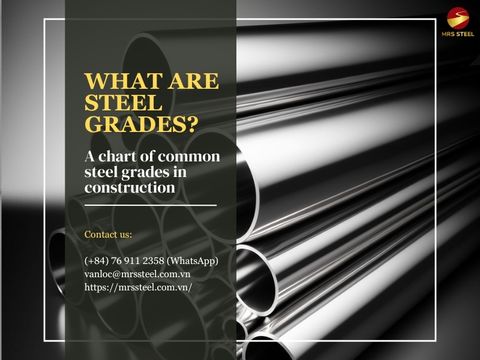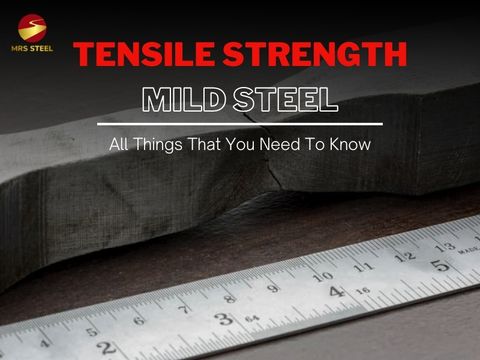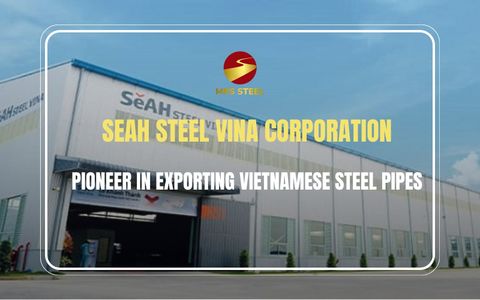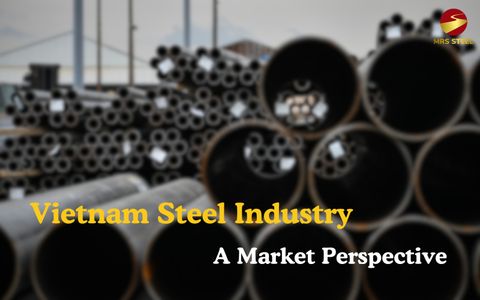Steel melting process from Vietnam's high quality iron ore

BlogDate: 18-01-2024 by: Ngoc Cam
Steel melting is a complex process, many stages and requires many advanced technologies to create finished products of outstanding quality, meeting the stiff demands in construction. The process has 3 main steps: iron ore treatment, blast furnace molten iron smelting and impurity treatment to form billets and finished products. In this article, MRS Steel will describe in detail the steel melting process to help you better understand the nature of this metal.
1. What is iron ore steel melting?
The process of making steel from scrap steel is relatively simple because the raw material only needs to go through an electric arc furnace (EAF) or an induction furnace (IF) to smelt into square billets and roll out the final product. Meanwhile, steel made from iron ore has to go through a long process with many different complicated stages.
Iron ores are rocks containing metallic minerals that are mined and processed to produce steel. Different types of iron ore contain different proportions of iron, divided into 3 basic types:
Magnetite: The chemical formula of this ore is Fe3O4 containing 72.41% iron. In nature, the amount of magnetite iron ore is very rare because they possess the highest iron content
Hematite: This is an iron ore with 70% iron content, after magnetite, the chemical formula is Fe2O3. In Greek, hematite ore means blood because of their characteristic red color, easily found in Asia, Australia, and Brazil.
Pyrit: The chemical formula is FeS2 containing iron content up to 46.67% with metallic, golden copper color. It is the most common of the sulfide minerals.

2. What is the process of making steel from iron ore?
Step 1: Iron ore processing
Iron ore with the main components being iron oxides Fe2O3 and Fe3O4 in raw form, with different contents and sizes, processed, mixed according to the required ratio, combined with coke coal, lime and dolomite to put into the furnace to produce liquid cast iron. The product is an alloy of Fe and C with a Carbon content of more than 1.7%. Carbon is an important element affecting the hardness, ductility and toughness of steel. When %C is in the range of 0.8-1%, the steel has the best strength and hardness, but if the ratio exceeds 1%, they begin to decrease. Therefore, the manufacturer reduces C in cast iron and some other harmful impurities (Cu, Ni, Cr) to less than 0.03%. Liquid cast iron water, after being transferred to an oxygen furnace, helps to melt iron ore and reduce the level of impurities such as sulfur, phosphorus,...
Step 2: Create a liquid of molten steel
From the molten cast iron in stage 1, it will continue to be led to the basic furnace or electric arc furnace to treat impurities and combine some other metals such as manganese, chromium, nickel, aluminum, copper, ... to enhance the technical properties of the steel and create the grade required by the market.
Step 3: Roll billet, finished steel
When step 2 has been completed, the liquid metal is put into casting machine systems to form billets or finished construction steel products such as rebar, coil, hot rolled steel,....
There are 3 main types of bar stock, slab and bloom, which are cast in two different states: hot casting and cold casting. For bar stock with cross section of 100x100, 125x125 and 150x150, length 6.9m or 12m for use as coil and rebar. Slabs are often used to make hot rolled coils, cold rolled coils or V-C-U-H sections, while bloom can completely replace both bar stock and slabs.

3. Vietnam's modern steelmaking technology
Thanks to the closed steel melting process, advanced technology lines imported directly from G7 countries such as Tenova group, Danieli - the leading corporation in Europe and the world in metallurgical and steel rolling equipment, has turned ore into high quality products without impurities. Products after steel melting have impurities below 0.03%, lower than the standards of many fastidious import markets in the world.
The process of smelting steel from ore removes many harmful impurities such as S, P, so the finished steel has strength and longer life expectancy. Steel made from iron ore possesses superior physical and mechanical properties and can be rolled into products with a higher diameter and grade of steel such as D55 construction steel, tensile strength reaching over 600N/m2, suitable for construction projects, bridges, ports, skyscrapers,…

Steelmaking is a complex production process, requiring many modern technologies and lines to ensure product quality and not cause pollution to the environment. Vietnam is one of the countries with the leading steel melting capacity in the world. For any inquiry and request for quotation, please contact MRS Steel via Email: vanloc@mrssteel.com.vn for detailed advice.























































